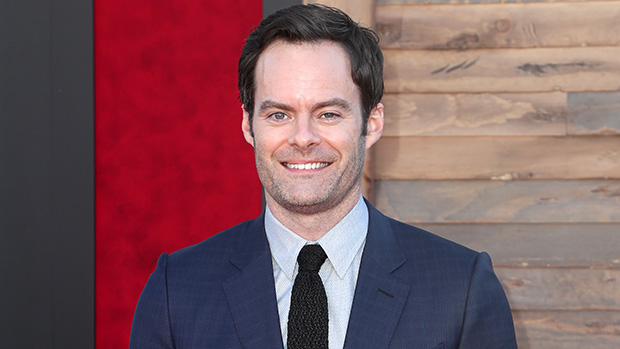“The Alabama Resolution” is likely one of the strongest exposés of the inhumanity of the American jail system I’ve ever seen. Directed by Andrew Jarecki (“Capturing the Friedmans,” “The Jinx”) and Charlotte Kaufman, the film is a scalding portrait of life on the within that exerts a grip worthy of a thriller. It’s an investigative documentary, filmed over 5 years, a lot of it in and across the Easterling Correctional Facility in Southeast Alabama, that doesn’t merely present us the continual abuse of prisoners. It uncovers a tradition of sanctified lawlessness. And the way in which “The Alabama Resolution” reveals this, peeling away layers of a systemic cover-up, turns into as dramatic because the crimes it’s about.
The film follows within the incendiary footsteps of documentaries like Ava DuVernay’s “thirteenth” and Liz Garbus and Jonathan Stack’s “The Farm: Angola, USA” and Stanley Nelson’s “Attica,” constructing on their insights. And it infiltrates the world of jail with an ingenuity, and emotional directness, made attainable (on this case) by know-how. A Supreme Court docket ruling has decreed that wardens can bar journalists from getting into prisons as a method of defending “security and safety.” Because of this something can go on behind bars, and it received’t be seen. It’s simpler to report on a warfare zone than it’s on a jail. However Jarecki and Kaufman penetrate the partitions of secrecy.
They first got here to Easterling, in 2019, for what appeared a constructive event. They had been there to document a non secular revival, full with barbecue, being held within the jail yard. But it surely turned out that this was a glorified public-relations stunt. Whereas they had been there, a number of prisoners took them apart and instructed them tales of beatings and stabbings and subhuman situations.
Those that are serving time have at all times discovered methods to get ahold of issues (medication, cash, and so on.), even when it violates jail protocol or the legislation. And in “The Alabama Resolution,” we watch the incarcerated males of Easterling talk with the skin world utilizing contraband cell telephones. The prisoners remained in contact with the filmmakers, utilizing the cell telephones as an underground communication system. And the footage of these calls, introduced in a vertical rectangle onscreen, carries a unprecedented muckraking urgency. Prisoners like Robert Earl Council and Melvin Ray, who converse their minds straight and report on what they’re observing, change into the movie’s forthright and compelling narrators.
We get direct testimony about what has gone on within the jail, however the uncooked telephone footage achieves one thing else. It humanizes the prisoners, permitting them to undercut their public identities as convicted criminals. The movie, in that sense, isn’t simply combating abuse. It’s pushing again in opposition to even a sympathetic viewers’s tendency to pigeonhole prisoners as we’re watching them. The total humanity of those males is one thing that’s too straightforward to brush apart, and that’s one thing “The Alabama Resolution” reminds us of at each second.
We’re introduced with surprising statistics in regards to the Alabama State Jail system. It’s one of many worst in the US, with the very best charges of drug overdose, rape, suicide, and homicide. How does one thing like that occur? Easterling is an establishment that’s at 200 % capability. The situations are horrifying. We see Robert Earl Council toss out the rats which might be scurrying round his rest room, and we be taught that he spent 5 years in solitary confinement. He seems and sounds astonishingly centered and upbeat for having gone via that hell, however part of you wonders: How may a jail justify preserving anybody in solitary for that lengthy? Within the case of Easterling, which is run like a totalitarian work farm, it’s all a part of how the system is organized to close down the prisoners’ voices, to make it possible for even essentially the most obtrusive breaches of legislation stay hidden.
Having set us on this nightmare world, the documentary takes form round a single horrifying occasion. A prisoner at Donaldson Jail, named Steven Davis, was overwhelmed by guards so brutally that he wound up within the ICU. But it surely was worse than that: He was discovered there in a physique bag. He’d been killed — for nothing. We’re proven a clandestine {photograph} that was taken of his corpse, and it’s a hideous picture, one you could’t unsee, his facial bones actually caved in, his eye a black circle. “The Alabama Resolution” turns into a homicide thriller. How did this occur and why? And the way may it have been lined up?
A number of prisoners noticed what occurred, and testify to it, and their phrases all align. They describe how Davis was overwhelmed, the guard in query taking his boot and smashing Davis’s head, bouncing it off the ground “like a basketball.” However there’s one prisoner who presents condradictory testimony. It’s Davis’s cell mate, James Gross sales. What accounts for the discrepancy? Gross sales has just a few months left of his sentence earlier than he goes free; he’s attempting to not rock the boat. And simply as we’re questioning how this may resolve itself, one thing occurs. The jail system resolves it, and never in a great way.
The important thing guard within the story, Roderick Gadson, along with his bald head and looming physique, evokes the menace of Suge Knight. We see footage of a listening to wherein he discusses the assorted transgressions he’s been accused of, dismissing them with a blithe consciousness that the system will shield him. The system, which incorporates all of the prisons in Alabama, is run for revenue. The state’s 20,000 incarcerated folks present $450 million in items and serves to Alabama every year. Which is why the state has spent $50 million defending jail officers in opposition to costs of misconduct.
The injustice of all of it — the homicide, the silence, the capitalist ethos that goes again to the slave period — is a component of a bigger racket, presided over by the Alabama governor, Kay Ivey, who’s so jaunty in regards to the surprise of her state’s jail system that she must be performed, within the Hollywood model of this story, by Kathy Bates. At one level there’s a state-wide jail strike to protest these crimes, and it seems well-organized. It positive factors traction and nationwide consideration and appears to be working…till it doesn’t. You could consider Attica. For who actually holds the playing cards right here?
“The Alabama Resolution,” as its title suggests, is about how prisons might be a part of a state-wide chain of corruption. We’re instructed about how the state is planning to consolidate its incarceration system by constructing three new mega-prisons, at a value of $900 million. That’s not an answer to overcrowded jail situations; it’s an effectivity transfer by an organization. And the movie means that Alabama, as dangerous because the scenario is there, just isn’t alone. These tendencies and injustices are a part of how jail in America more and more works. However “The Alabama Resolution” lays naked the rotten guts of this method with sufficient sobering proof, and sufficient filmmaking pressure, to make a distinction.
The post Andrew Jarecki’s Highly effective Jail Exposé appeared first on Allcelbrities.








